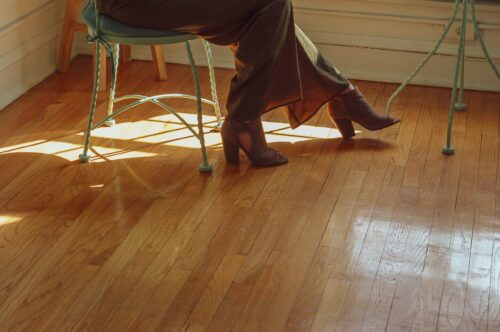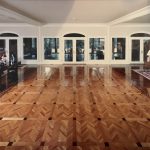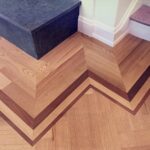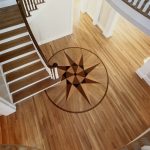As Boston hardwood floor experts, we know how important all aspects of the jobs are. It’s not only about installing beautiful custom wood floors or performing floor restoration in our client’s residences; it’s also essential to leave the home spotless when we are done. From the initial stages of sourcing unfinished hardwood flooring to wrapping up the project, we make sure every detail is accounted for.
At JJ Hardwood, we will only use dustless floor sanding techniques and strategies while performing work in our clients’ homes, and in this article, we will explain why it’s so crucial for us to operate this way.
How It Used To Be
We all have that image in our minds when we think of sanding. We picture a home under construction with workers covered in wood dust, not to mention all areas of the house caked in dust.
The unfinished hardwood flooring must be installed, sanded, and finished. Unfortunately, the dust can be all-enveloping. Wood dust can be haunting to wary homeowners who are afraid to undergo any home renovation because of the mess.
Dustless sanding machines have developed quite a bit over the years. Thankfully, those nightmarish scenarios of wood dust covering every inch of your is a thing of the past, as long as crews use proper dustless sanding equipment.
Before dustless sanding equipment and techniques existed, the best hardwood floor installation crews could prep the area with protective tarps and quarantine off the spaces as much as possible. All a team could hope for was that they did an excellent job containing the wood dust in one area, but that area would be saturated with wood dust.
And it would take lots of cleanup to get into every nook and corner. The process was far from perfect, but it was the best hardwood flooring installation crews could provide.
Dustless Sanding Today
Thankfully, the dustless sanding machines that we have today are nothing short of extraordinary.
A top-quality dustless sander will remove 99 percent of wood dust particles before they are ever airborne. A dustless sander works with two main components to the system.
The first component is the sander itself, which works just as any professional sander would, but the second component is a vacuum with a containment reservoir. The vacuum in a dustless sander is very powerful and creates enough negative pressure to collect almost all wood dust before it’s jettisoned from underneath the sander. From there, the dust is filtered and captured in the containment vessel. Combining dustless sanding with a pristine plasticizing effort, you then get a thoroughly clean environment, almost as if we were never there!
At JJ Hardwood Floors, it is part of our dustless sanding process to plastic-off/seal-off all appliances, cabinets, bookcases, and adjoining areas. These procedures ensure all dust is contained in the work areas, and it is a comfort to know you do not have to worry about dust in your home.
Learn About Luxury Vinyl Tile in Our Blog:
What is LVT flooring? A Guide to Luxury Vinyl Tile
Why Invest In/Use a Dustless Sander?
There are many reasons for a hardwood floor installation company to invest in dustless sanders; some of the incentives are more obvious than others.
The cleanup and project preparation are much quicker and more efficient. It’s no longer necessary to spend many working-hours preparing not just the immediate area to be sanded but also all other home areas that would experience fallout from wood dust.
For clients that have family members with allergies, asthma, and respiratory sensitivities, dustless sanding has made a significant impact on helping alleviate the concern of respiratory challenges during hardwood floor installation.
Before hardwood floor refinishing can be completed during a project, the unfinished hardwood flooring MUST be dust-free.
If dust particles or wood granules are not removed before the floor is finished, it can produce imperfections in the final product and cause issues that may need to be addressed down the line. Dustless sanding has helped many hardwood floor installers improve the quality of their final product.
Our Dustless Sanding Protocols for Unfinished Hardwood Flooring
We still take extra precaution by installing plastic protection within the home’s interior – mapping out dust barriers to protect areas that may be subject to wood dust. We use ZipWall® dust protection products to accomplish this.
Our crews are trained on, and operate, Oneida Vortex® DCSs (Dust Containment Systems). They are the reference-level dustless sander, and the quality of the equipment sets the standard for which all other competitors try to achieve.
As our crews work sanding the new floors, finished flooring throughout the home is protected rosin paper, ram board, and all other necessary materials to keep finished floors looking beautiful.







